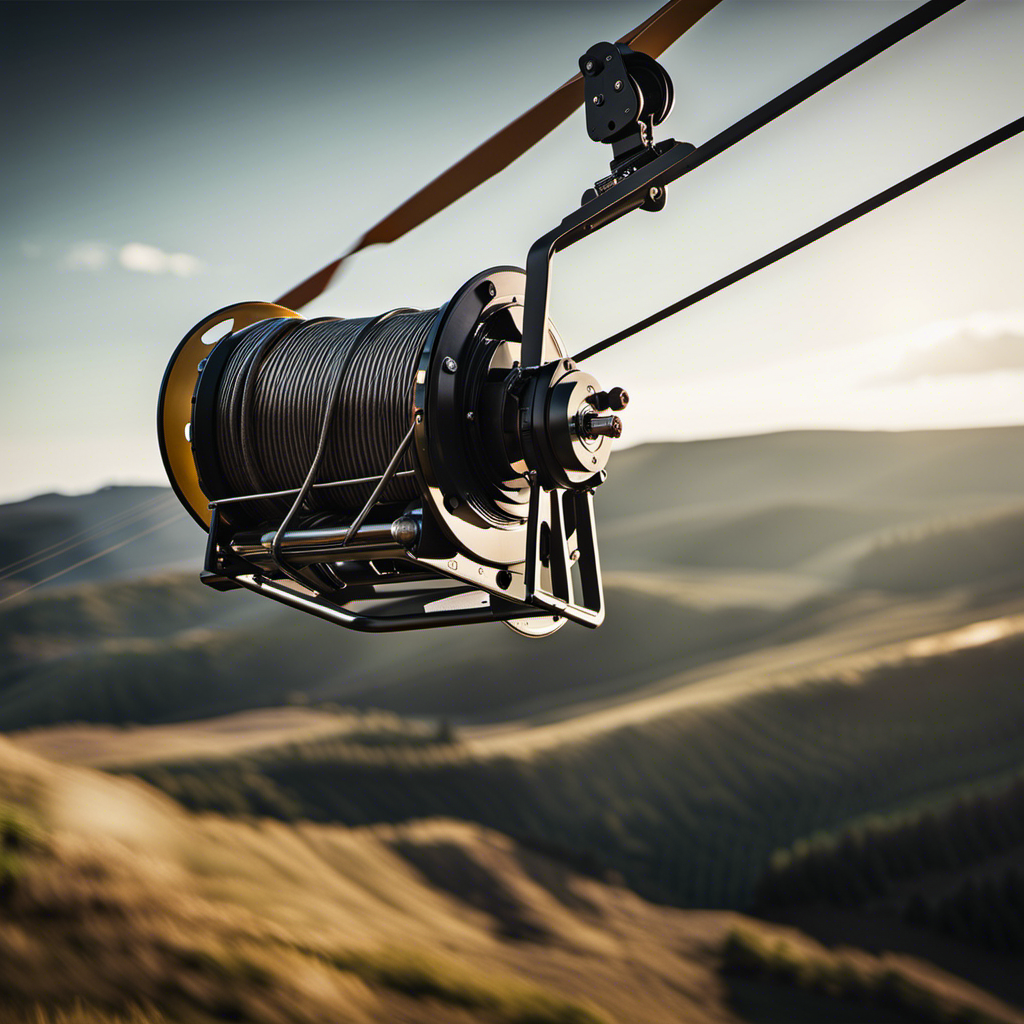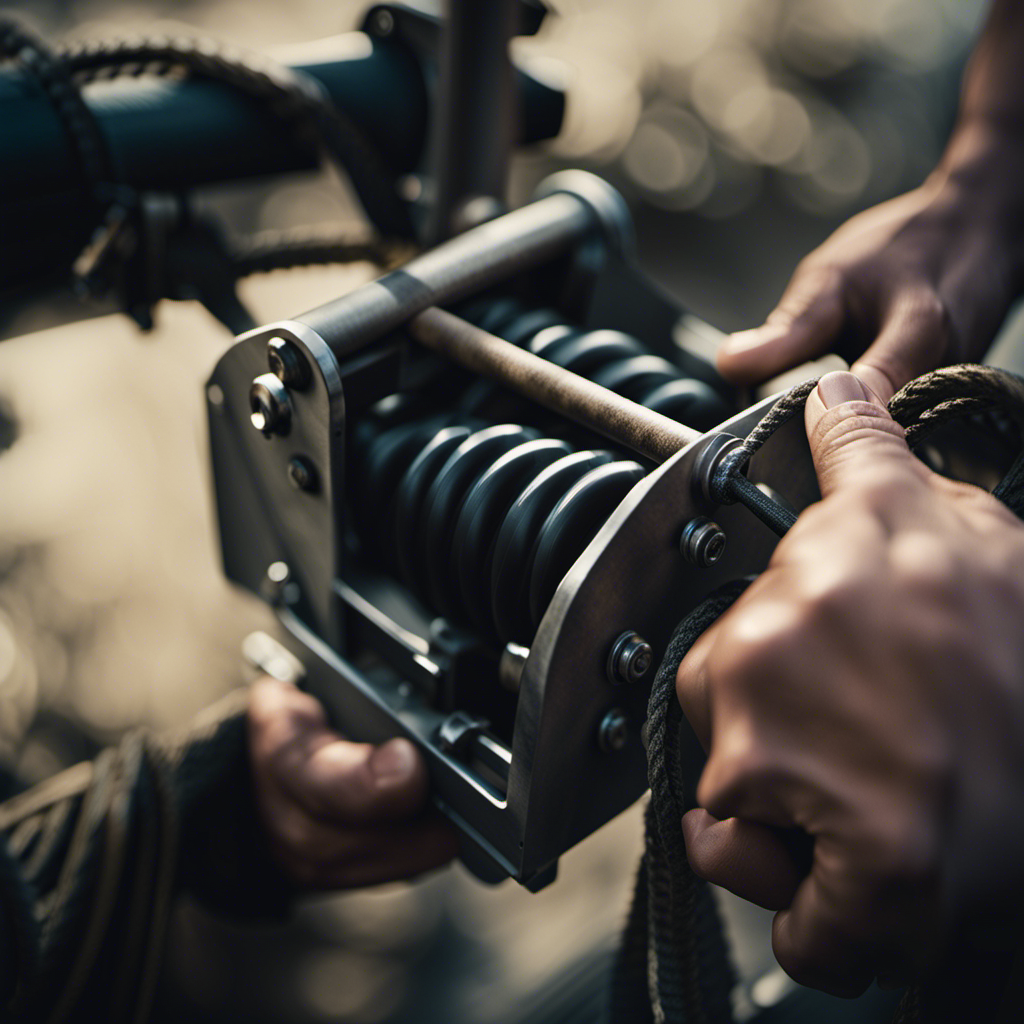Can we classify soaring as a hobby?
As a passionate glider myself, I can confidently say that it is not just a hobby, but a thrilling and exhilarating adventure. Soaring through the skies in an unpowered aircraft, feeling the wind beneath your wings, is an experience like no other.
It requires a unique set of technical skills and knowledge, and fosters a tight-knit community of enthusiasts. Gliding not only benefits our mental and physical health, but also offers a sustainable and environmentally friendly way to embrace the beauty of flight.
Join me on this journey as we explore the world of gliding.
Key Takeaways
- Gliding offers membership options and benefits, including access to gliders and reduced rates for training and flying time.
- Scholarships and sponsorships are available for aspiring gliders, making it more accessible to a wider audience.
- Gliding provides hands-on experience, improves pilot skills, and sets a solid foundation for future endeavors in the aviation industry.
- Gliding promotes physical and mental health benefits for pilots and offers a unique perspective on nature’s beauty, providing a thrilling and transformative experience.
The History and Origins of Gliding
The history and origins of gliding can be traced back to the early 19th century. It was during this time that humans first began to dream of soaring through the sky like birds.
The development of gliding as a sport and recreational activity was a result of years of experimentation and innovation. Inventors and aviation pioneers, such as Otto Lilienthal and the Wright brothers, played crucial roles in the history of gliding. Through their dedication and determination, they paved the way for the modern gliding we know today.
The development of gliding technology, from simple fabric-winged gliders to sophisticated, high-performance aircraft, has been a testament to human ingenuity. This rich history and development sets the stage for the thrill and challenge of flying unpowered aircraft, which we will explore in the subsequent section.
The Thrill and Challenge of Flying Unpowered Aircraft
Experience the exhilarating thrill and unique challenge of soaring through the sky in unpowered aircraft. Gliding offers a one-of-a-kind experience that combines the adrenaline rush of flying with the serenity of gliding silently through the air.
It is a sport that perfectly balances thrills and risks, pushing you to your limits while also rewarding you with breathtaking views and a sense of freedom.
The learning curve in gliding is steep, as it requires mastering a range of skills, from reading weather conditions to understanding aerodynamics. However, the journey is incredibly rewarding, as you gain the ability to harness the power of nature and navigate the skies with precision.
Transitioning into the subsequent section about the technical skills and knowledge required for gliding, it is crucial to develop a solid foundation of expertise to ensure a safe and enjoyable experience.
The Technical Skills and Knowledge Required for Gliding
Mastering the technical skills and knowledge needed for gliding is essential to ensure a safe and enjoyable journey through the skies. Gliding requires a unique set of abilities that go beyond traditional piloting skills. Here are three key technical skills that every glider pilot must possess:
-
Aerodynamics: Understanding the principles of flight and how air flows around the glider is crucial for maintaining control and maximizing performance.
-
Navigation: Navigating without an engine requires precise calculations and the ability to read the landscape to find thermals and other lift sources.
-
Emergency Procedures: Gliding safety measures include the ability to handle emergency situations such as sudden weather changes or equipment malfunctions.
By honing these technical skills, glider pilots can navigate the skies with confidence and ensure the safety of themselves and others.
Now, let’s delve into the community and culture of gliding enthusiasts, where passion for this extraordinary hobby brings people together.
The Community and Culture of Gliding Enthusiasts
Joining the community of gliding enthusiasts allows you to connect with like-minded individuals who share your passion for soaring through the skies. Being a part of this community provides a sense of belonging and support, as you can rely on others to share their knowledge and experience. Gliding events, such as competitions and airshows, bring the community together to celebrate the beauty and excitement of gliding. These events not only showcase the skills and talents of gliders, but also provide an opportunity for enthusiasts to gather and exchange stories, tips, and techniques. The table below highlights some of the ways in which the gliding community supports its members and promotes a vibrant culture of shared experiences.
| Community Support | Gliding Events |
|---|---|
| Mentoring new pilots | National Championships |
| Organizing group flights | Glider Festivals |
| Providing access to resources | Airshow Demonstrations |
With such a strong and supportive community, gliding becomes more than just a hobby; it becomes a way of life. The connections made within this community foster a sense of camaraderie and motivate individuals to continue pushing the boundaries of their skills and knowledge. As we delve into the benefits of gliding for mental and physical health, it is evident that the community and culture of gliding enthusiasts play a crucial role in enhancing the overall experience of this exhilarating activity.
The Benefits of Gliding for Mental and Physical Health
As you explore the benefits of gliding for mental and physical health, you’ll discover how this exhilarating activity can improve your overall well-being. Gliding offers numerous benefits for both the mind and body, making it an ideal hobby for those seeking holistic wellness.
Mentally, gliding provides a sense of freedom and tranquility, allowing you to escape the stresses of everyday life and find a peaceful state of mind. The serenity of soaring through the sky, combined with the focus required to navigate the aircraft, can also improve mental clarity and concentration.
Physically, gliding is a fantastic form of exercise, engaging various muscle groups and promoting cardiovascular health. The physical demands of controlling the glider, along with the adrenaline rush of flying, contribute to increased strength, flexibility, and stamina.
Transitioning to the competitive aspect of gliding, racing and competitions take this already thrilling activity to the next level.
The Competitive Aspect of Gliding: Racing and Competitions
To fully immerse yourself in the competitive aspect of gliding, you’ll find that racing and competitions add an exhilarating element to this already thrilling activity. Whether you’re a seasoned glider or just starting out, participating in gliding competitions can challenge your skills and push you to new heights.
Here are some racing techniques and aspects of gliding competitions that make them so exciting:
-
Tactical decision-making: In a race, you have to strategize your flight path, taking into account wind patterns and thermals to gain an advantage over your competitors.
-
Precision flying: Gliding competitions require you to navigate through designated checkpoints with utmost accuracy, testing your piloting skills.
-
Speed challenges: Racing against the clock adds a thrilling element to gliding, as you aim to complete the course in the shortest time possible.
-
Adrenaline rush: The adrenaline rush you experience during a gliding competition is unmatched, as you push the limits of your abilities and strive for victory.
Now that you understand the competitive side of gliding, let’s explore the cost and accessibility of this incredible hobby.
The Cost and Accessibility of Gliding as a Hobby
Transition: Moving on from the competitive side of gliding, let’s now explore the cost and accessibility of this exhilarating hobby.
Current Subtopic: The Cost and Accessibility of Gliding as a Hobby
Gliding, like any other hobby, comes with its own set of expenses. Owning and maintaining a glider can be quite costly. From purchasing the glider itself, to insurance, maintenance, and storage fees, these expenses can add up quickly. However, there are ways to make gliding more affordable. Many gliding clubs offer membership options that include access to gliders and reduced rates for training and flying time. Additionally, some clubs even offer scholarships or sponsorships to help aspiring gliders get started.
Accessibility is another important aspect of gliding. While it may seem like an elite sport, gliding is actually more accessible than you might think. Many gliding clubs welcome beginners and provide training programs to help newcomers learn the ropes. Additionally, gliding events and competitions often offer opportunities for spectators to experience gliding first-hand through introductory flights. These initiatives aim to make gliding more accessible to a wider audience, allowing more individuals to enjoy the thrill of soaring through the skies.
Transition: As we delve into the impact of gliding on the environment and sustainability, it is crucial to consider the balance between our passion for this hobby and its effects on our surroundings.
The Impact of Gliding on the Environment and Sustainability
If you’re thinking about the impact of gliding on the environment and sustainability, it’s important to consider the balance between your passion for this activity and its effects on our surroundings. Here are three reasons why gliding can have a significant impact on wildlife and contribute to our carbon footprint:
-
Noise pollution: Gliders are known for their silent flight, which can be a blessing for pilots seeking tranquility in the air. However, this silence can be detrimental to wildlife, as they rely on sound cues to detect potential threats or communicate with each other.
-
Habitat disturbance: Gliding often involves taking off and landing in natural environments, which can disrupt the habitats of various species. The constant movement and presence of gliders can lead to the displacement or disturbance of wildlife populations.
-
Carbon emissions: While gliders are more environmentally friendly than powered aircraft, they still have a carbon footprint. The production and maintenance of gliders, as well as the transportation to and from gliding sites, contribute to greenhouse gas emissions.
Considering these factors, it is crucial for gliding enthusiasts to be mindful of their impact on the environment and take steps to minimize it.
Transitioning into the subsequent section, let’s explore the role of gliding in aviation education and training.
The Role of Gliding in Aviation Education and Training
Gliding plays a significant role in aviation education and training by providing hands-on experience and improving pilot skills. As an avid glider pilot myself, I can attest to the immense value of this activity in the realm of aviation.
When it comes to aviation education, gliding offers a unique opportunity for aspiring pilots to gain practical knowledge and enhance their flying abilities. The physical and mental demands of gliding require pilots to develop exceptional situational awareness, decision-making skills, and adaptability.
Additionally, gliding promotes physical health by engaging the body in a challenging and exhilarating activity. The mental health benefits are equally important, as gliding allows pilots to escape the stresses of daily life and immerse themselves in the pure joy of flying.
These aspects of gliding set a solid foundation for pilots’ future endeavors in the aviation industry. Moving forward, let’s explore personal stories and testimonials from gliding enthusiasts, showcasing the transformative power of this remarkable hobby.
Personal Stories and Testimonials from Gliding Enthusiasts
One enthusiast shared how gliding improved their confidence and decision-making skills, making them a better pilot.
Gliding has been an incredible journey, filled with personal experiences that have shaped not only their flying abilities but also their character.
The feeling of being suspended in the air, relying solely on the wind and their own skills, is exhilarating. It has taught them to trust themselves and make split-second decisions when necessary.
Gliding has also allowed them to appreciate the beauty of nature from a unique perspective. The sense of freedom and serenity that comes with soaring through the skies is unparalleled.
If you’re looking for a thrilling and transformative experience, gliding is a must-try. It will challenge you, build your confidence, and ignite a passion for aviation that will last a lifetime.
Frequently Asked Questions
How long does it take to become a proficient glider pilot?
Becoming a proficient glider pilot takes time and dedication. The learning curve can be challenging, but with the right techniques and strategies, I can confidently say that it usually takes several months to a year to become proficient in gliding.
Are there any age restrictions for participating in gliding as a hobby?
There are no specific age restrictions for participating in gliding as a hobby. However, it is important to consider factors such as physical fitness and maturity. Gliding experience can be gained at any age, with proper training and guidance.
Can gliding be dangerous, and what safety measures are in place?
Gliding safety is of utmost importance. While it can be dangerous, proper safety measures are in place. These include thorough pre-flight checks, ongoing pilot training, and strict adherence to regulations. Gliding clubs also prioritize safety through regular maintenance and inspections.
Is it possible to try gliding without committing to a full membership or purchasing equipment?
Trying gliding as a hobby is like spreading your wings and soaring through the sky. You can experience the thrill without committing to a membership or purchasing equipment by taking a trial lesson at a gliding club.
Are there any specific medical requirements or physical fitness levels needed to participate in gliding?
To participate in gliding, there are no specific medical requirements. However, it is important to have a basic level of physical fitness as it involves some physical exertion during takeoff and landing.
Conclusion
In conclusion, gliding is more than just a hobby. It is a thrilling and challenging activity that requires technical skills and knowledge.
The gliding community is a tight-knit group of enthusiasts who share a passion for flying unpowered aircraft.
Not only does gliding provide mental and physical health benefits, but it also plays a role in aviation education and training.
Despite its cost and accessibility limitations, gliding offers a unique experience that cannot be replicated.
So, next time you see a glider soaring through the sky, remember the skill, dedication, and environmental impact behind this incredible hobby.









